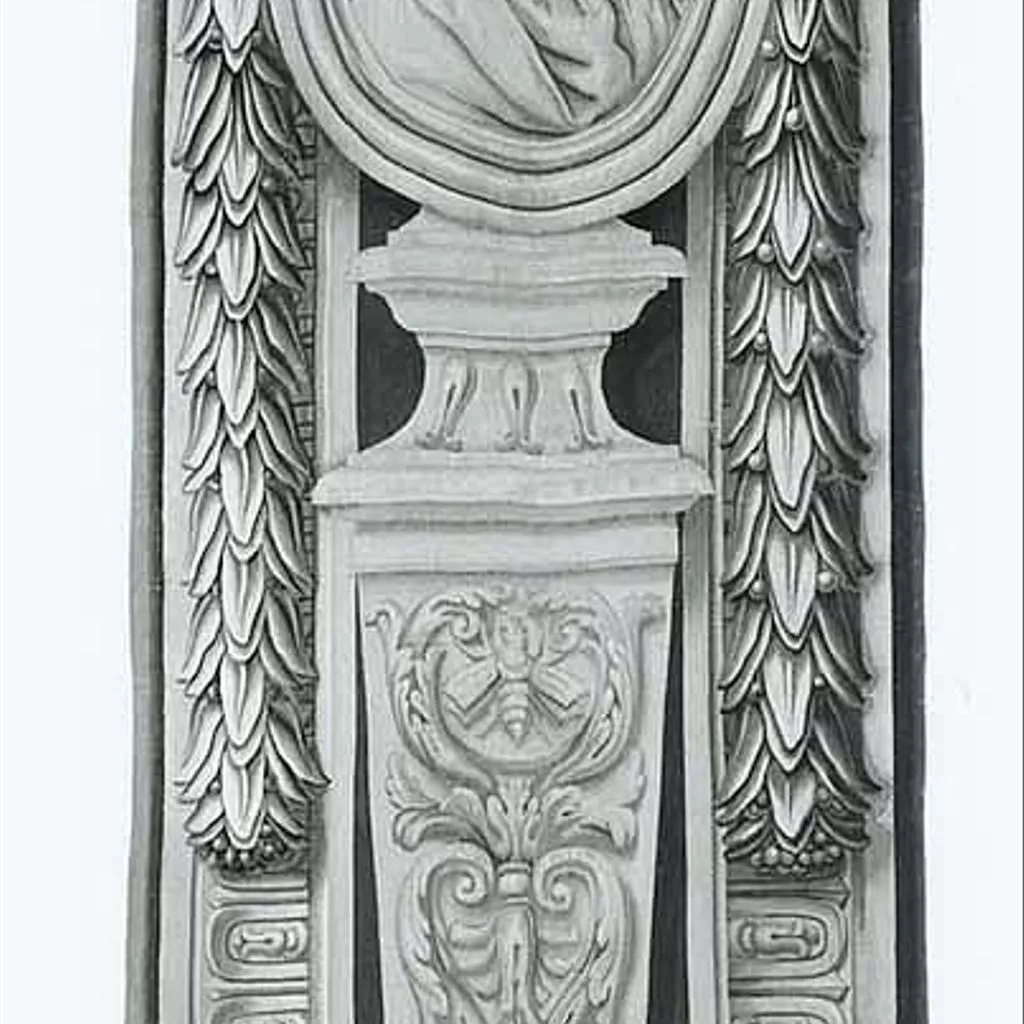Between 1663 and 1679, created for the Barberini family, Palazzo Barberini, Rome [see note 1]; last quarter of the 19th century, series removed from the Palazzo Barberini and sold. By 1928, Altkunst Antiquitäten, Berlin; April 26-27, 1935, Altkunst liquidation sale, Paul Graupe, Berlin, lot 702, sold for RM 530 [see note 2]. About 1935, acquired from an unknown dealer by Eugene L. Garbáty (b. 1880 - d. 1966), Schloss Alt-Döbern, Niederlausitz (Germany), Paris, and New York [see note 3]; 1950, gift of Eugene Garbáty to the MFA. (Accession Date: November 9, 1950)
NOTES:
[1] The four related tapestries in the collection of the MFA (accession nos. 50.3586, 50.3587, 51.2804, and 52.262) are from a series produced by the tapestry manufactory established in Rome by Cardinal Francesco Barberini during the pontificate of his uncle, Maffeo Barberini (d. 1644), who became Pope Urban VIII. This series, begun in 1663 and finished in 1679 (though largely complete in 1676), was woven to celebrate the life and achievements of Urban VIII. There were ten narrative scenes; the four MFA tapestries are from a group of 14 vertical panels that flanked the narrative scenes laterally. For a detailed discussion of the series and additional bibliography, see James Gordon Harper, "The Barberini Tapestries of the Life of Pope Urban VIII" (Ph.D. diss., University of Pennsylvania, 1988) and Pascale-François Bertrand, "Un grand décor tissé à Rome au XVIIe siècle: la Vie due Pape Urbain VIII," Mélanges de l'Ecole français de Rome. Italie et Méditerranée, 106, no. 2 (1994): pp. 639-682.
[2] The four MFA tapestries were sold as part of a lot of eight lateral panels from the Barberini series. They were first published as being with Altkunst by Heinrich Göbel, Wandteppiche und ihre Manufakturen in Frankreich, Italien, Spanien und Portugal, part II, Die Romanischen Länder (Leipzig: Klinkhardt & Biermann, 1928), vol. 1, p. 421.
[3] In 1950, Eugene Garbáty told the MFA that he had acquired six of the Barberini panels around 1935 from "an art dealer who supposedly sold them upon request of the owner, from Springfeld Castle, near Graz, Steiermark, Austria." Garbáty fled Nazi Germany in 1938, after the family company (of which he was part owner), Garbáty Zigarettenfabrik, was Aryanized, or sold to non-Jewish owners. He took the six tapestries with him to Paris. When he left for the United States in 1939, he left two of the tapestries in Paris and never recovered them. The four remaining tapestries in his possession he gave to the MFA between 1950 and 1952.
ADDITIONAL INFORMATION:
Altkunst Antiquitäten, the Berlin art gallery that owned the four Barberini tapestries, was part of Margraf and Co., a group of art galleries run by Jakob and Rosa Oppenheimer. In 1933, the Oppenheimers, who were Jewish, fled Germany to avoid Nazi persecution and relocated to France. In their absence they were forced out of their management roles at Margraf and were forbidden from performing any legal transactions for the company. Margraf was extinguished as quickly as possible by the Nazi regime. The gallery stock was sold off rapidly in a series of auctions held in Berlin in 1935. The MFA tapestries were included in one of these forced liquidation sales. The MFA contacted the Oppenheimer heirs in 2010 to inform them of the tapestries' location, and a settlement allowing the MFA to retain the works was reached in March 2011. / Gift of Eugene L. Garbáty in memory of his parents, Josef and Rosa Garbáty and Charles Potter Kling Fund






